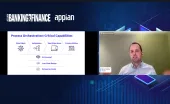
Open source drives digital banking fanfare in ASEAN
Traditional banks are embracing open source solutions and reaping the benefits of increased market agility.
In ASEAN’s financial services industry, Thailand’s Kasikorn Bank (KBank) quickly realised it could not afford to move slowly or spend lavishly given the toe-to-toe competition. It needed to ensure its mobile banking app, K Plus, was able to scale alongside the growing user base, and that it can introduce new features to the app faster to provide personalised customer experiences.
KBank’s solution was to get its tech arm, Kasikorn Business-Technology Group (KBTG), to update and optimize its IT infrastructure. By deploying Red Hat’s platform, container, and messaging technologies—which are all built on open source—KTBG managed to adopt DevOps and agile methodologies, which in turn enabled it to achieve the speed and scale needed such that it can now handle 5,000 transactions per second. The open, modern IT architecture also enabled KBank to easily connect with its business partners’ systems to deliver more features on K Plus, and provided a responsive, reliable application environment that reduced application development time from one month to two weeks.
Traditional banks in transition
Many other traditional banks in ASEAN that are riding the digital wave are doing so with newfound confidence and tech-savviness by partnering with open source solutions providers like Red Hat.
“From a financial perspective, ASEAN is very important because the region has been one of the biggest drivers of innovation. And the institutions in ASEAN are looking at open source as the enabler for this drive,” said Arvind Swami, Director, FSI, APAC at Red Hat, commenting on the fast-growing interest among Asian banks in open source solutions.
Arvind reckoned that traditional banks are embracing open source as a response to pervasive digitalisation trends, from shifting customer behaviour and expectations that now favour banks with digital services to the blurring of the demarcation of boundaries between geographies and industries. “We’re seeing cross-industry pollination such as utility players getting into financial services. We’re also seeing Grab and Go-Jek coming out with payment platforms in the region. So all of this is what is driving this digital disruption,” he added.
The pressure to transit from the old ways of banking to digital is tremendous, and Asian banks have to grapple with a host of challenges. Arvind reckoned that the first challenge for banks is shifting away from the mindset of working in silos, and being guided by monetary authorities. “With disrupting factors coming into play, the traditional mechanism of delivering services is no longer as effective as before,” he noted. “Traditional banks running on legacy infrastructure are struggling with agility, the ability to provide services and adapt to changes in a quick manner.”
3 ways to stay Agile
For Arvind, ASEAN financial institutions looking to gain the agility needed to thrive in the new digital world order should look at three key areas. “The first is customer engagement, where they should look at not only providing capabilities or engagement in a siloed manner, but also how they are connecting with the ecosystem. The technology side of that is around open API, which enables a third party player or an aggregator to connect with the bank’s systems to provide a holistic engagement to customers.”
The second area is operational efficiency, with banks needing to make sure that the processes within the bank are fast and seamless. This is where capabilities in automating processes, including IT functions, will be crucial.
The third and final area, according to Swami, is the speed at which banks can launch and scale whilst meeting strict compliance rules. “If banks start a payments capability, they need their IT infrastructure to be able to scale—which is where we see hybrid cloud coming into play because it can help accelerate time to market—whilst meeting regulatory requirements in the market.”
Open source solutions provide traditional banks with robust answers to such challenges, Arvind said, citing how OpenShift Container Platform has assisted Singapore’s OCBC Bank, Indonesia’s Bank Tabungan Pensiunan Nasional (BTPN) and Malaysia’s Hong Leong Bank Berhad (HLB).
As part of its digital strategy, OCBC Bank modernised its technology architecture and deployed solutions, including wealth management applications, built on the OpenShift platform. Specifically, the platform has enabled the bank to increase reusability, lower overall cost of investment and increase development efficiency. Meanwhile, BTPN leveraged OpenShift for hybrid cloud, and also transformed its internal culture to move away from a traditional, siloed development and operations organisation to a more agile bank that quickly delivers dynamic business needs, according to Arvind.
“Malaysia’s Hong Leong Bank, meanwhile, deployed our solutions to bolster its application development and security capabilities, as well as maintain its existing investments and control of its assets,” he added. “Collectively, based on its estimates, the new capabilities helped HLB reduce in-house app development and go-to-market time by 40% to 60%, depending on complexity, and lower the cost to market by 40% to 60%.”
















 Advertise
Advertise






